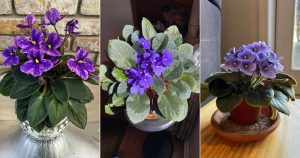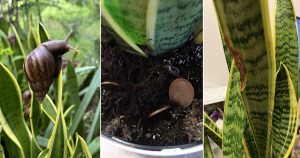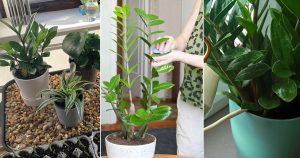Learn the right way to water succulents in July so they don’t rot or shrivel and grow gloriously for years!
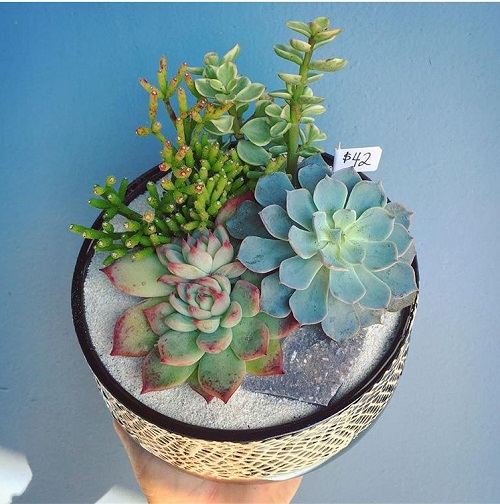
Succulents are tough cookies. They survive where most plants wilt. But with summer heating things up, you might feel tempted to water more often. Hold that watering can! Overwatering is a fast track to root rot. Let’s break down how to keep your succulents happy and hydrated this July—without drowning them.
How to Water Succulents in July So They Don’t Rot or Shrivel
1. Check the Soil First
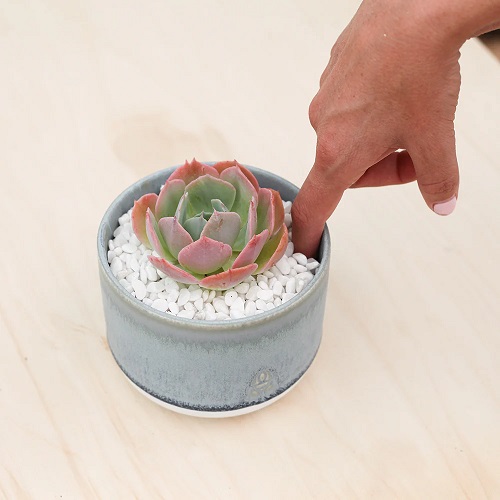
Before you water, do the classic finger test. Stick your finger about an inch deep into the soil. If it feels dry, go ahead and water. If it’s even slightly damp, wait it out.
Also, watch how quickly the soil dries. If it stays wet for over 4–5 days, your pot might have poor drainage. That’s your cue to switch to a well-draining mix.
Pro tip: If you have your succulents in black pots, remember that they can heat up in summer quicker due to evaporation and thus, you may need to increase your watering frequency.
2. Watering Thoroughly, not Frequently
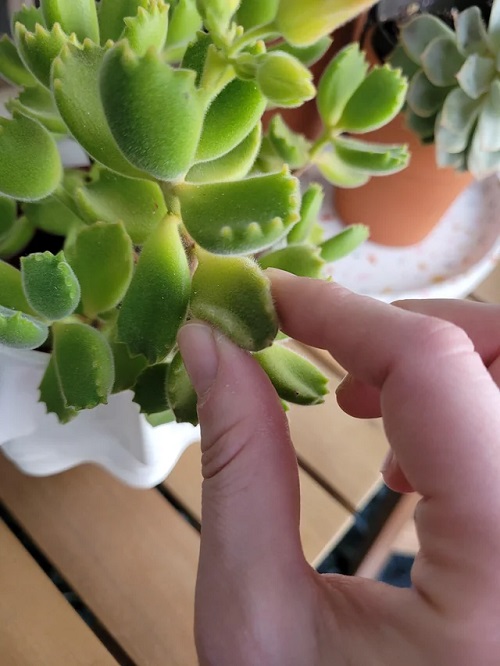
Succulents don’t like frequent sips—they prefer a good soak when they’re thirsty. Wait until the soil is bone dry, then water deeply until it drains out the bottom.
Though you may not be able to notice this in all succulents, you can check out the leaves in Jade or Bear Paw. If they are plump and somewhat rigid, it means they have enough water to last them a few more days. But if they look wrinkled or soft near the base, you know what to do.
A rule of thumb is to water every 10 days or 2 weeks early in the day so that they dry off and don’t rot.
3. Try the Soak-and-Dry Method
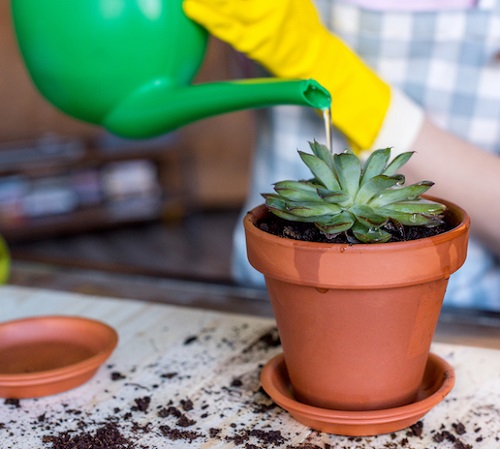
This is pretty much one of the most effective techniques for watering your succulents. Place the pot in a shallow bucket filled with water (about ¼ of the way up). Let the soil soak through the drainage hole. Once it’s fully wet, take it out and let it drain.
This technique actually mimics how succulents grow in the wild—a good rain followed by a dry spell. It also builds strong, deep roots.
Just don’t overdo it—let the soil dry completely before the next watering.
4. Water At the Base

If dunking isn’t your thing, water at the base. Pour water directly into the soil, not over the leaves. Wet leaves can lead to rot or fungal issues.
You can also try bottom watering—place the pot in a tray of water and let it absorb from below. But don’t let it sit for more than 15–20 minutes.
Pro tip: Bottom watering is great for sensitive succulents that don’t like wet stems.
5. Adjust For Seasons
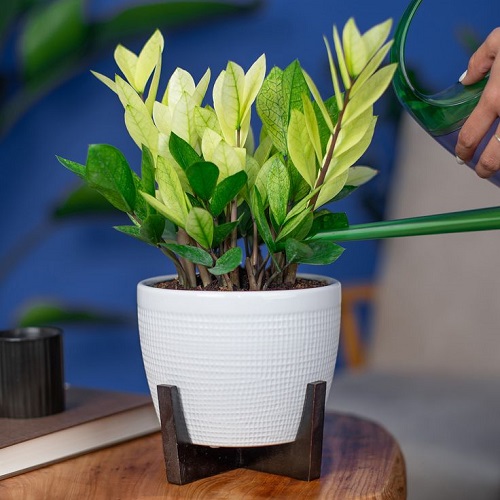
Believe it or not, summer is actually a dormant season for many succulents. They don’t grow much, which means they don’t drink much either.
Water less, not more. Consider the light, temperature, and humidity before watering. Whether indoors or outdoors, try to match their natural dry-and-wet rhythm.
Some types like Echeveria may still grow slowly in summer—watch their leaves and growth patterns to adjust care.
Note: If you grow your succulents outdoors and your area gets heavy rainfall already in summer, consider not watering at all.
6. Check for Build-Up Around the Soil
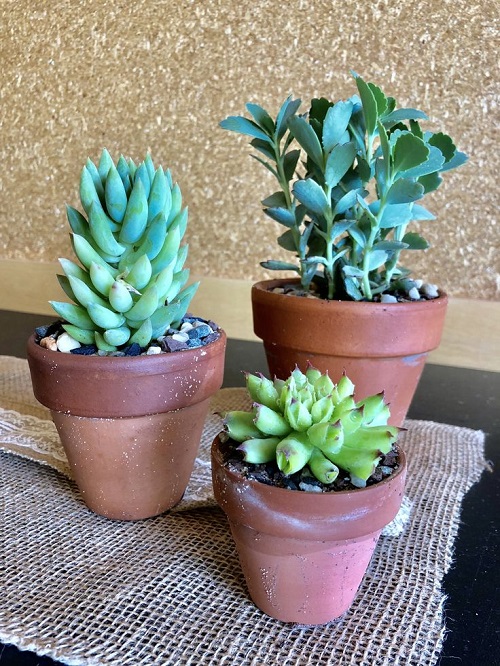
One thing that many succulent enthusiasts miss out on is checking the soil for debris. Meaning? You need to keep the succulent soil free of any built-up leaf debris, mulch, and even salts. These can often hold water, keeping the succulent base wet. And you know what that leads to—root rot and pests, of course.
Salt build-up often happens when using hard water. Over time, it messes with the soil’s health. Switch to rainwater or distilled water if you can.
You can flush the soil with clean water every 1–2 months to remove salt build-up. Just be sure the pot drains fully afterward.
7. Monitor for Pests
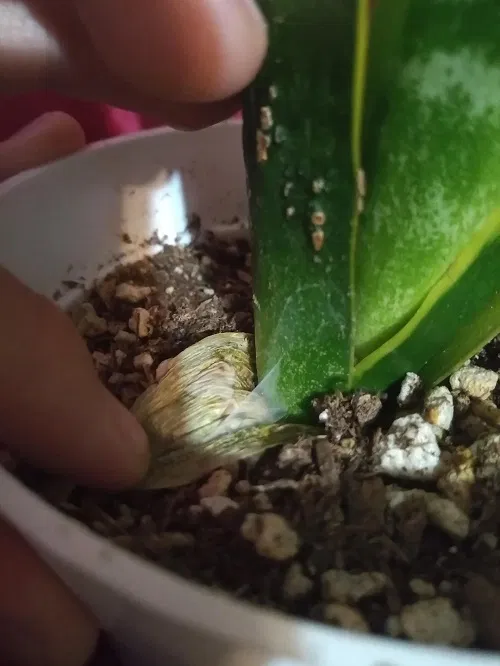
Even if your watering is on point, pests might be the real troublemakers. Mites and mealybugs love moist, cozy corners, especially around roots.
Besides checking for white fluff around leaves and roots regularly, hose them off or treat with neem oil. If the infestation is large, try killing them with insecticidal soap.
Also, ants hanging around your pot might be protecting mealybugs—so that’s a red flag too.
So this was practically a guide on how to water succulents in July so they don’t rot or shrivel. Do you have any other tips to share? Write them in the comments below!

